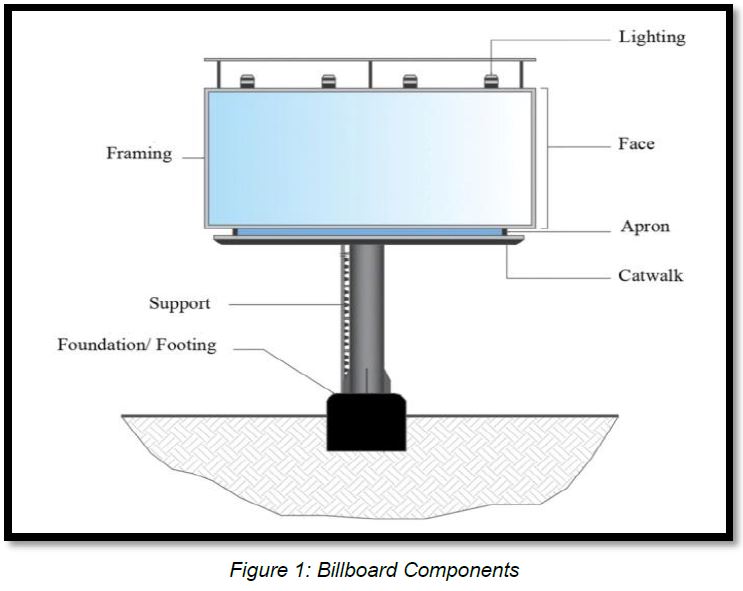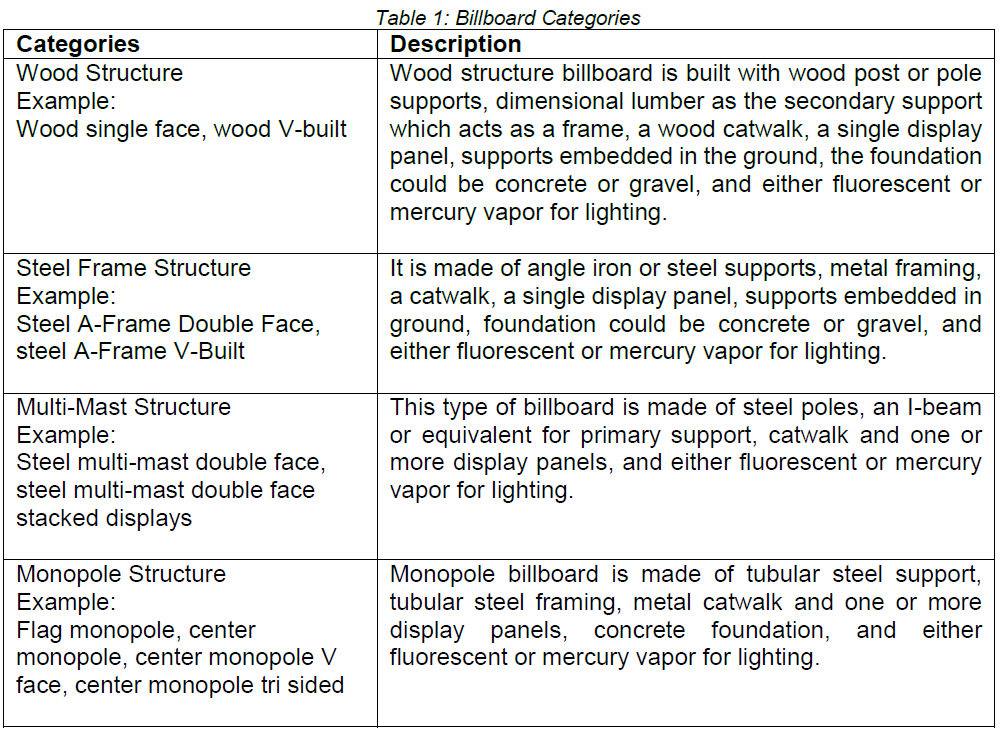Author: Ir. Dr. Justin LAI Woon Fatt | 28 January, 2023
A billboard is a type of outdoor advertising display that consists of at least one display panel and a supporting framework. It can be freestanding, attached to buildings, or mounted to other structures, commonly placed at densely populated areas with high traffic. Modern billboards are built to engineering specifications and are made of steel, whereas older billboard structures are made of wood or angle iron frames. A billboard may be smaller than the maximum allowed size, to ensure the addition of cutout or extension within the permitted area’s envelope.
Billboard Categories and Definitions
Billboards are classified into four structural categories which are wood, steel frame, multi-mast steel, and monopole, based on the structural materials used and the underlying support system.

Billboard Design Considerations
Billboards are mostly placed in public seen areas and close to public access, thus they shall be properly designed to ensure public safety. An underdesigned billboard structure may cause injury to pedestrians, damage to property and vehicles, as well as impede traffic flow. The risk of failure under wind load is a major concern in billboard structural design, compared to the self-weight, dead, and live loads of the billboard which are relatively small. Thus, we may see some billboards collapse after a heavy storm along the highway or main streets. This is due to the billboard is subjected to a wind load that is greater than the ideal wind load predicted by the structural engineers, which eventually leads to the collapse of the billboard, i.e., a global stability failure. Most highway billboards are one-sided, two-sided, or three-sided, and supported by a single column. The large windward area of this type of cantilever structure can cause high internal stresses in the members, exceeded which localized failure could occur. Thus, a competent structural engineer is playing an important role in designing an optimum and safe billboard structure at an economical cost.
According to MS 1553:2002 Code of Practice on Wind Loading for Building Structure, there are various considerations to consider in designing a billboard such as site wind speed, design wind speed, design wind pressure, wind actions, and so on. MS 1553:2002 requires main wind force resisting structures to be designed to withstand a wind load of at least 0.65 kPA (almost equivalent to 65kg per meter square of wind resisting area) multiplied by the area of the building or structure projected on a vertical plane normal to the wind direction.
This minimum design requirement is left out sometimes, mostly in the low-standing billboard by the roadside that is much more reachable by the general public than a high-standing giant billboard, due to the ignorant attitude or the so-called I-have-seen-it-before-argument. Those who undermine the wind load design may also be taking advantage of the temporary nature of the billboard structure. Consequently, these wind-resisting structures are constructed with much smaller steel members and much lighter foundations. Small steel members yield or even fracture under strong wind events while light-weight foundation is pulled off from the ground, both result in a final structure deformation or even collapse. That is why we could observe the roadside billboard collapse after strong wind weather from time to time.
Standing high into the sky in busy public areas, the billboard’s structure stability and safety are of utmost public concern. No failure is regarded tolerable or acceptable for such a structure. A small falling steel part from a billboard structure could subject a pass-by to severe bodily injury or causing a traffic accident to the crossing vehicles. Adequate wind design and its subsequent structural solution are never an option or compromise in billboard design, but the most important design factor that needs to be tackled by structure engineer with extreme cautious. No part shall fail.
Ir. Dr. Justin LAI Woon Fatt
CEO/ Founder
IPM Group
References:
[1] Malaysian Standard 1553 2002 Code of Practice on Wind Loading for Building Structure, Department of Standards Malaysia
[2] “Billboard Structures Valuation Guide”, North Carolina Department of Revenue Local Government Division Property Tax Section, 19 January 2018. Retrieved on 28th January 2023 from https://www.ncdor.gov/media/8690/open
[3] Joni Irawan, Luki Wicaksono, Adderian Noor. Connection Model of Steel Pipe Construction of Billboard Structure Pile. Proceeding of the International Conference on Innovation in Science and Technology (ICIST 2020). Advances in Engineering Research, volume 208




